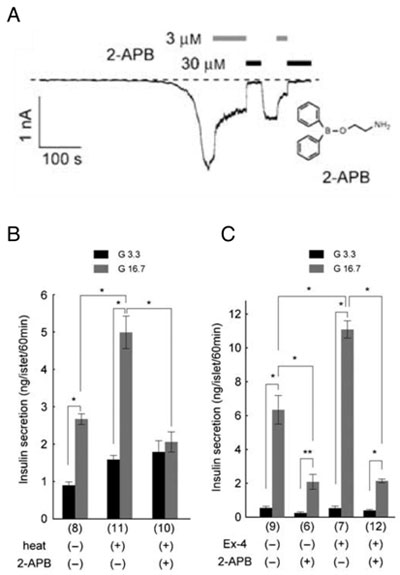Kazuya Togashi, Hitoshi Inada and Makoto Tominaga Inhibition of the transient receptor potential cation channel TRPM2 by 2-aminoethoxydiphenyl borate (2-APB) British Journal of Pharmacology (2008), [Jan 23 Online]
Transient receptor potential melastatin 2 (TRPM2) is a non-selective Ca2+ -permeable cation channel and is known to be activated by adenosine 50 -diphosphoribose (ADP-ribose) and hydrogen peroxide. TRPM2 current responses are reported to be drastically potentiated by the combination of each of these ligands with heat. Furthermore, the combination of cyclic ADP-ribose with heat also activates TRPM2. Although flufenamic acid, antifungal agents (miconazole and clotrimazole), and a phospholipase A2 inhibitor (N-(p-amylcinnamoyl)anthranilic acid) inhibit TRPM2, their inhibition was either gradual or irreversible. To facilitate future research on TRPM2, we screened several compounds to investigate their potential to activate or inhibit the TRPM2 channels using the patch-clamp technique in HEK293 cells, transfected with human TRPM2. 2-aminoethoxydiphenyl borate (2-APB) exhibited a rapid and reversible inhibition of TRPM2 channels that had been activated by its ADP-ribose or cADP-ribose and heat in a dose-dependent manner (IC50 about 1 mM). 2-APB also inhibited heat-evoked insulin release from pancreatic islets, isolated from rats. 2-APB proved to be a powerful and effective tool for studying the function of TRPM2.
